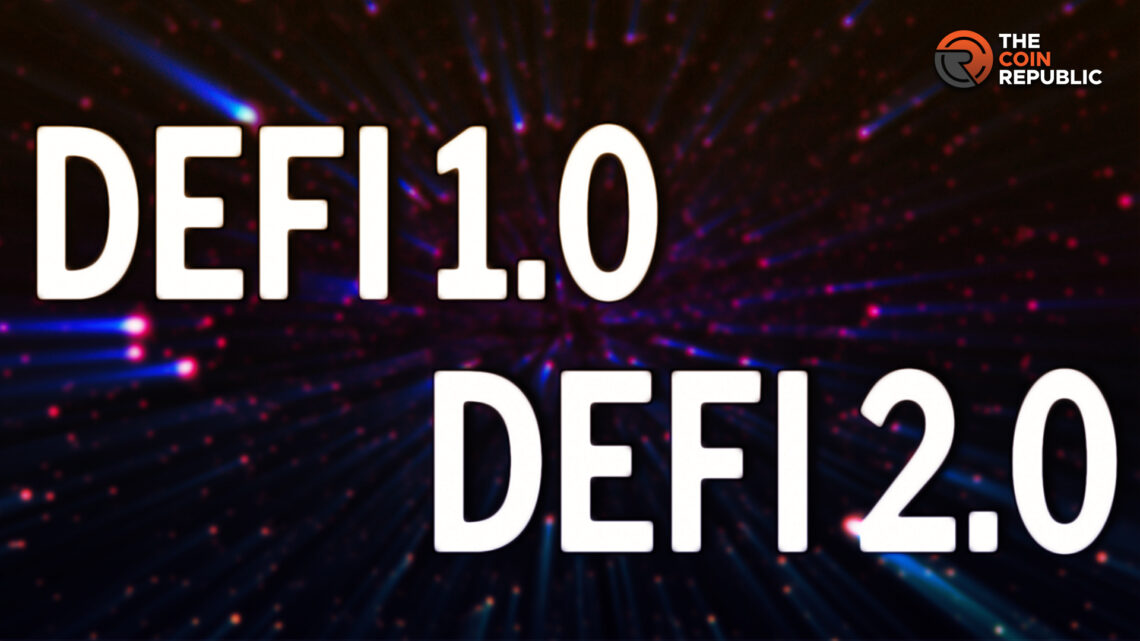- 1 DeFi 2.0 enhances decentralization, scalability, and user experience.
- 2 Cross-chain bridges and layer 2 solutions boost DeFi interoperability.
Decentralized financial applications, abbreviated as DeFi, use blockchain technology to make financial services more accessible and transparent. Since its initial release, DeFi has seen many revisions, and the most recent is DEFI 2.0.
DeFi 2.0: Overcoming Blockchain Limitations for Widespread Adoption
DeFi 1.0 emerged around 2018, allowing individuals to borrow, lend, trade, and perform P2P financial transactions on various blockchains like Ethereum without intermediaries being involved. Initial use cases for DeFi 1.0 included decentralized token trading platforms like Uniswap, interest-bearing loan platforms like Aave, and stablecoins like DAI that maintain their value relative to fiat currencies.
The main benefit of DeFi 1.0 was that anyone could use these applications on the blockchain without any permission, boosting the accessibility and transparency of financial services. Some of the issues that hindered the spread and adoption of DEFI 1.0 were Slow speeds, high gas prices, and an inability to scale
DeFi 2.0 aspires to construct scalable, low-cost, and highly efficient decentralized financial systems. While still keeping a firm commitment to decentralization and transparency, DeFi 2.0 aims to make decentralized finance more accessible and usable by removing technological impediments.
Cross-chain bridges enable DeFi’s functionality in a multi-chain environment by facilitating the exchange of value and information between blockchains, and layer 2 scaling solutions like zero-knowledge rollups that perform transactions off-chain to reduce congestion and gas fees on root blockchains like Ethereum are also important innovations.
The Complementary Relationship Between DeFi 1.0 and 2.0
Community-controlled models in economics and software development are made possible by consensus mechanisms like proof-of-stake upgrades and decentralized autonomous organizations, resulting in lower energy consumption and faster transaction times. Major banks use cryptographic products such as centralized stablecoins, derivatives, and lending platforms.
DeFi 2.0 intends to increase efficiency, interoperability between blockchains, speed, cost, and the user experience by innovating in these areas. Proponents think that the wider adoption of decentralized financial systems will benefit from this.
However, proponents of DeFi 1.0 argue that new features in DeFi 2.0 could undermine the decentralization and openness that attracted users in the first place. Centralized stablecoins or intermediaries may bring back the same issues that plagued centralized finance in the first place.
Conclusion
It seems that both DeFi 1.0 and DeFi 2.0 play important roles in propelling widespread acceptance of decentralized finance. Demand for accessible financial services was underlined, and the foundations of DeFi 1.0 technology were laid. At the same time, DeFi 2.0 is providing important technical advancements that may allow decentralized finance to develop stably without losing its community-oriented ethos.
DeFi 1.0 and 2.0 are not alternatives but rather supplementary iterations of the same ecosystem. DeFi 2.0 expands on previous efforts to make decentralized finance a more open and transparent alternative to traditional monetary systems.

Nancy J. Allen is a crypto enthusiast, with a major in macroeconomics and minor in business statistics. She believes that cryptocurrencies inspire people to be their own banks, and step aside from traditional monetary exchange systems. She is also intrigued by blockchain technology and its functioning. She frequently researches, and posts content on the top altcoins, their theoretical working principles and technical price predictions.


 Home
Home News
News







